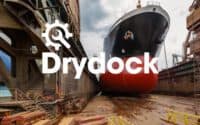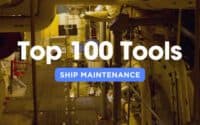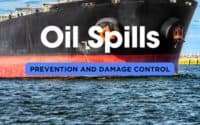Ultimate Guide to Ship Thrusters: Maintenance / Rebuild / Purchase & Install

Ship thrusters play a critical role in the maneuverability and operational efficiency of commercial maritime vessels. Whether navigating tight harbors, docking in congested ports, or maintaining position in rough seas, thrusters provide the precise control needed to ensure safe and efficient operations. For shipowners and operators, understanding the intricacies of thruster maintenance, rebuilds, and the purchase and installation process is essential for maximizing the performance and longevity of their vessels. This guide explores these key aspects, offering valuable insights to help you make informed decisions that keep your ships running smoothly.
| ShipUniverse: Benefits of Ship Thrusters | |
|---|---|
| Enhanced Maneuverability | Thrusters allow for precise lateral and rotational movement, making it easier to navigate in confined spaces such as ports, harbors, and narrow channels without relying heavily on tugboats. |
| Increased Safety | By providing greater control over the vessel’s movement, thrusters reduce the risk of collisions and groundings, particularly in challenging conditions like strong currents or high winds. |
| Operational Efficiency | Thrusters enable quicker docking and undocking, reducing turnaround times and improving the overall efficiency of port operations. |
| Cost Savings | With improved maneuverability, ships can reduce their dependence on tug services, leading to significant cost savings over time. |
| Flexibility in Port Selection | Ships equipped with thrusters can access a wider range of ports, including those with more challenging navigation conditions, thus expanding their operational flexibility. |
| Compliance with Port Regulations | Some ports require ships to have bow thrusters to enter and dock safely. Ships without thrusters may be restricted or face additional costs, making thrusters essential for accessing these ports. |
| Reduced Environmental Impact | Advanced thruster systems, especially those integrated with dynamic positioning technology, can help reduce fuel consumption and emissions by minimizing the need for excessive engine use during maneuvering. |
| Improved Crew Confidence | Thrusters give the crew greater confidence in their ability to handle the vessel in difficult situations, leading to smoother operations and reduced stress during critical maneuvers. |
Ship Thruster Maintenance
Maintaining ship thrusters is crucial to ensuring the longevity, reliability, and optimal performance of a vessel. Thrusters are exposed to harsh marine environments, and regular maintenance helps prevent issues that could lead to costly downtime or repairs. Proper maintenance not only extends the life of the thruster but also ensures that the ship remains maneuverable and safe under various operating conditions. This section provides an in-depth look at the key maintenance tasks involved in keeping ship thrusters in peak condition.
| ShipUniverse: Ship Thruster Maintenance | |
|---|---|
| Visual Inspections | Regularly inspect the thruster tunnel, propeller, and surrounding areas for signs of damage, corrosion, marine growth, or debris. Ensure proper alignment of thruster components and check for any signs of misalignment that could lead to wear. |
| Cleaning | Clean the thruster tunnel and propeller to remove marine growth, debris, and sediment that can accumulate and impact performance. Check and clean sacrificial anodes that protect the thruster from corrosion, replacing them as necessary. |
| Lubrication | Lubricate bearings and seals regularly to reduce friction and prevent wear. This should be part of routine maintenance stops or dry-docking procedures. Proper lubrication ensures smooth operation and reduces the risk of mechanical failure. |
| Electrical System Maintenance | Inspect the electric motor for signs of wear, overheating, or electrical faults. Check all electrical wiring, connections, and control systems for damage, corrosion, or loose connections. Repair or replace components as necessary to maintain reliable operation. |
| Hydraulic System Maintenance | Check and maintain hydraulic fluid levels within the recommended range. Inspect hydraulic lines, fittings, and connections for leaks. Replace hydraulic filters regularly to prevent contamination and ensure smooth operation of the thruster system. |
| Propeller and Shaft Maintenance | Regularly inspect the propeller for damage, wear, or imbalance. Repair or replace damaged propellers as necessary. Check the shaft for wear, corrosion, and proper alignment, especially during dry-docking. |
| Cooling System Maintenance | Ensure coolant levels are maintained and inspect the cooling system for leaks or blockages. Clean heat exchangers to prevent overheating of the motor or hydraulic system, which could lead to performance issues or damage. |
| Anode Replacement | Replace sacrificial anodes regularly to protect the thruster from galvanic corrosion. The frequency of replacement depends on the operating environment but typically occurs during dry-docking. |
| Control System Checks | Regularly test the control systems, including the thruster joystick or control panel, to ensure they are responding correctly. Update any software-controlled components to the latest version to maintain optimal performance. |
| Dry-Docking Inspections | During dry-docking, perform a thorough inspection of the entire thruster system, including the tunnel, propeller, shaft, seals, and all mechanical and electrical components. Carry out necessary overhauls, such as replacing seals, bearings, or other critical components. |
| Record Keeping | Maintain detailed records of all maintenance activities, including inspections, repairs, part replacements, and any issues encountered. This helps in tracking the condition of the thruster over time and planning future maintenance. |
Insider Tips: Ship Thruster Maintenance
- Use Diver Inspections: Schedule periodic underwater inspections by professional divers to check the condition of the thruster tunnel, propeller, and anodes without the need for dry-docking. This can catch early signs of wear or damage that might not be visible from inside the ship.
- Pre-Cruise System Checks: Always perform a quick operational test of the bow thruster before leaving port to ensure it is functioning correctly. This can prevent unexpected failures during critical maneuvers.
- Anti-Fouling Coating: Apply a high-quality anti-fouling coating to the inside of the thruster tunnel and propeller to minimize marine growth and reduce the frequency of cleaning.
- Monitor Vibration Levels: Regularly monitor the vibration levels of the bow thruster during operation. Increased vibration can indicate misalignment, wear, or damage to the propeller or shaft, allowing for early intervention.
- Hydraulic Oil Analysis: Perform regular analysis of hydraulic oil for signs of contamination or wear particles. This can help identify potential issues in the hydraulic system before they lead to major failures.
- Temperature Monitoring: Install temperature sensors on the motor and bearings of the bow thruster. Sudden increases in temperature can signal overheating or impending mechanical failure, allowing for timely maintenance.
- Keep Spare Anodes Onboard: Always keep a set of spare sacrificial anodes onboard to ensure they can be replaced immediately when needed, especially if operating in corrosive environments.
- Use Soft Start Systems: Consider installing a soft start system for the thruster motor to reduce the electrical load during startup, extending the life of both the motor and the ship’s electrical systems.
- Regular Grease Sampling: Take grease samples from the thruster bearings periodically to check for contamination or degradation. This can prevent bearing failure by ensuring they are properly lubricated.
| ShipUniverse: Sample Cost Breakdown | |
|---|---|
| Maintenance Task | Estimated Cost (USD) |
| Visual Inspections – Regular checks of tunnel, propeller, etc. |
$500 – $1,500 per inspection |
| Cleaning (Diver or Dry-Docking) – Marine growth removal and anode cleaning |
$2,000 – $5,000 |
| Lubrication of Bearings and Seals – Includes cost of grease and labor |
$1,000 – $3,000 per session |
| Electrical System Maintenance – Inspection and repairs of motor, wiring, etc. |
$1,500 – $4,000 |
| Hydraulic System Maintenance – Fluid replacement, leak checks, and filter changes |
$2,000 – $4,500 |
| Propeller and Shaft Maintenance – Inspection, balancing, and repairs |
$3,000 – $7,000 |
| Cooling System Maintenance – Cleaning of heat exchangers and checking coolant levels |
$1,000 – $2,500 |
| Anode Replacement – Replacement of sacrificial anodes |
$1,000 – $2,000 per replacement |
| Control System Checks – Testing and calibration of control systems |
$1,000 – $3,000 |
| Dry-Docking Inspections – Comprehensive inspection during dry-docking |
$5,000 – $15,000 |
| Record Keeping and Documentation – Maintenance logs and documentation updates |
$500 – $1,500 |
Ship Thruster Rebuild
Rebuilding a ship thruster is a critical process that can significantly extend the life of the equipment, restore its performance to near-original levels, and save costs compared to purchasing a new unit. Whether due to wear and tear over time, damage from harsh operating conditions, or the need for technological upgrades, a thorough rebuild can breathe new life into an aging thruster system. This section explores the key aspects of a ship thruster rebuild, offering a comprehensive guide to the process, from disassembly to reassembly, ensuring that your thruster remains a reliable component of your vessel’s maneuvering capabilities.
| ShipUniverse: (Ship Thruster Rebuild) | |
|---|---|
| Initial Assessment | Conduct a comprehensive assessment of the thruster to determine the extent of wear and damage. This includes inspecting the propeller, tunnel, shaft, bearings, seals, and motor. Detailed diagnostic tests, such as vibration analysis and thermal imaging, can help identify underlying issues that may not be immediately visible. |
| Disassembly | Carefully disassemble the thruster, taking note of the condition of each component. Ensure that all parts are properly labeled and documented to facilitate accurate reassembly. This step is crucial for identifying components that need replacement or refurbishment. |
| Component Inspection and Cleaning | Inspect each disassembled component for wear, corrosion, or damage. Clean all parts thoroughly to remove any buildup of marine growth, rust, or debris. Components such as the propeller, shaft, and seals should be scrutinized for any signs of fatigue or cracks. |
| Replacement of Worn Parts | Replace any components that show significant wear or damage, including bearings, seals, gaskets, and potentially the propeller or shaft if they are beyond repair. Ensure that replacement parts meet the manufacturer’s specifications to maintain the thruster’s performance. |
| Upgrades and Modifications | Consider upgrading certain components during the rebuild process, such as installing a more efficient propeller design, modernizing the control systems, or adding advanced monitoring sensors. These upgrades can enhance the thruster’s performance and extend its service life. |
| Reassembly | Reassemble the thruster carefully, ensuring that all components are aligned correctly and torqued to the manufacturer’s specifications. Pay special attention to sealing surfaces and connections to prevent leaks and ensure proper operation. |
| Testing and Calibration | After reassembly, perform a series of tests to verify the thruster’s performance. This includes running the thruster under various loads, checking for vibrations, and calibrating control systems. Adjust settings as necessary to ensure optimal operation. |
| Final Inspection and Documentation | Conduct a final inspection to confirm that the thruster rebuild meets all operational standards. Document the entire rebuild process, including parts replaced, tests conducted, and any modifications made. This documentation is vital for future maintenance and operational records. |
| Post-Rebuild Maintenance Schedule | Establish a post-rebuild maintenance schedule based on the condition of the rebuilt thruster. This schedule should include regular inspections, lubrication, and monitoring to ensure the thruster continues to operate effectively and to prevent future issues. |
Insider Tips: Ship Thruster Rebuild
- Use Manufacturer-Specific Tools: When disassembling and reassembling the thruster, always use tools specified by the manufacturer. These tools ensure proper handling of parts and prevent damage during the rebuild process.
- Custom-Fit Seals: Consider using custom-fit seals instead of generic ones, especially in older thrusters. Custom seals provide a better fit, reducing the risk of leaks and improving overall performance.
- Laser Alignment: Utilize laser alignment tools during reassembly to ensure precise alignment of the thruster shaft and motor. This minimizes vibration and wear, extending the life of the rebuilt thruster.
- Upgrade to High-Efficiency Bearings: If the thruster is subject to heavy use or operates in challenging environments, upgrading to high-efficiency or ceramic bearings can reduce friction and wear, improving durability and performance.
- Non-Destructive Testing (NDT): Incorporate non-destructive testing methods like ultrasonic testing or magnetic particle inspection during the assessment phase. NDT can detect internal flaws in components that might not be visible during a visual inspection.
- Balanced Propeller Rebuild: Ensure that the propeller is dynamically balanced after any repair or replacement. An unbalanced propeller can cause excessive vibration and lead to premature wear on the entire thruster system.
- Consider Future Upgrades: When planning a rebuild, consider the potential for future upgrades or modifications. Designing the rebuild to accommodate future enhancements can save time and money down the line.
- Seal Replacement Timing: Always replace seals even if they appear in good condition during a rebuild. Seals may degrade over time, and replacing them during a rebuild avoids potential issues shortly after reassembly.
- Conduct a Sea Trial: After the rebuild and dockside testing, conduct a sea trial to assess the thruster’s performance under real operating conditions. This helps identify any issues that might not be apparent during dockside tests.
| ShipUniverse: Sample Cost Breakdown for Thruster Rebuild | |
|---|---|
| Rebuild Task | Estimated Cost (USD) |
| Initial Assessment – Comprehensive inspection and diagnostics |
$2,000 – $5,000 |
| Disassembly – Labor and documentation of parts |
$3,000 – $6,000 |
| Component Inspection and Cleaning – Cleaning and detailed inspection of all components |
$2,500 – $5,000 |
| Replacement of Worn Parts – Cost of new bearings, seals, propeller, etc. |
$10,000 – $25,000 |
| Upgrades and Modifications – Optional component upgrades and system enhancements |
$5,000 – $15,000 |
| Reassembly – Labor for reassembling the thruster |
$4,000 – $8,000 |
| Testing and Calibration – Performance testing and system calibration |
$3,000 – $7,000 |
| Final Inspection and Documentation – Final checks and documentation updates |
$1,500 – $3,500 |
| Post-Rebuild Maintenance Schedule – Planning and scheduling future maintenance |
$1,000 – $2,500 |
| Total Estimated Cost | $32,000 – $77,000 |
Purchasing and Installing Ship Thrusters
When considering the purchase and installation of a ship thruster, several critical factors must be taken into account to ensure that the selected system meets the operational needs of the vessel. The right thruster can significantly enhance a ship’s maneuverability, safety, and overall efficiency, making it a vital investment for shipowners. Below we go through the key aspects of purchasing and installing ship thrusters, from selecting the appropriate type and size to ensuring a successful installation that integrates seamlessly with your vessel’s existing systems.
| ShipUniverse: (Ship Thruster Purchase and Installation) | |
|---|---|
| Determining the Right Thruster Type | Assess the specific needs of your vessel, including its size, operational environment, and maneuvering requirements. Common types include bow thrusters, stern thrusters, and azimuth thrusters. Each type serves different purposes, so choosing the right one is crucial for optimal performance. |
| Calculating Required Thrust Power | Calculate the required thrust power based on the vessel’s displacement, hull shape, and operational conditions. This ensures the thruster provides sufficient force to maneuver the ship effectively, even in challenging conditions such as strong currents or high winds. |
| Considering Energy Source and Efficiency | Evaluate the energy source for the thruster, whether electric, hydraulic, or diesel-driven. Consider the efficiency and integration with the ship’s existing power systems. Electric thrusters are common in modern ships due to their energy efficiency and ease of control. |
| Choosing Between New and Used Thrusters | Weigh the pros and cons of purchasing a new versus a used thruster. New thrusters offer the latest technology and warranties, while used thrusters may be more cost-effective but require more thorough inspection and potential refurbishment before installation. |
| Supplier Evaluation and Selection | Research and evaluate potential suppliers based on their reputation, product range, after-sales support, and availability of spare parts. Selecting a reliable supplier is essential for ensuring long-term support and the availability of necessary components. |
| Installation Planning | Plan the installation process in detail, including the need for hull modifications, integration with existing control systems, and coordination with other ongoing maintenance tasks. Installation should be scheduled to minimize downtime and disruption to the ship’s operations. |
| Hull Modifications and Structural Considerations | If the installation requires hull modifications, such as cutting a tunnel for a bow thruster, ensure that structural integrity is maintained. Work with naval architects and marine engineers to design and execute the modifications correctly. |
| Integration with Control Systems | Ensure the thruster is properly integrated with the ship’s existing control systems. This may involve upgrading or modifying the ship’s control panels, software, and user interfaces to accommodate the new thruster. |
| Testing and Commissioning | After installation, conduct thorough testing and commissioning of the thruster. This includes running the thruster under various conditions to ensure it performs as expected. Any issues identified during testing should be addressed before the thruster is put into regular operation. |
| Training for Crew and Operators | Provide training for the crew and operators on the use of the new thruster. Proper training ensures that the thruster is used effectively and safely, maximizing its benefits and reducing the risk of operator error. |
| Documentation and Record Keeping | Maintain detailed records of the purchase, installation, and commissioning process, including supplier details, installation plans, and testing results. This documentation is essential for future maintenance and potential troubleshooting. |
| Post-Installation Monitoring and Maintenance | Implement a monitoring and maintenance plan to keep the thruster in optimal condition. Regular inspections, performance monitoring, and adherence to a maintenance schedule will ensure the thruster remains reliable and efficient over its operational life. |
Insider Tips: Ship Thruster Purchase and Installation
- Custom Design Considerations: If your vessel has unique operational requirements, consider commissioning a custom-designed thruster. Custom designs can optimize performance for specific conditions, such as high-speed operations or frequent maneuvering in confined spaces.
- Engage Early with Naval Architects: Involve a naval architect early in the planning process to ensure that the thruster’s design and installation will integrate seamlessly with the ship’s hull and structural integrity. Early engagement can prevent costly design changes later in the process.
- Opt for Modular Installation Kits: If possible, choose a thruster system that comes with a modular installation kit. These kits simplify the installation process, reduce downtime, and ensure all necessary components are included and properly aligned.
- Pre-Installation Simulation: Run a simulation of the thruster’s performance based on the vessel’s specific characteristics and operational conditions. Simulations can identify potential issues and allow for adjustments before installation begins.
- Negotiating Warranty Terms: When purchasing a thruster, negotiate the warranty terms to include extended coverage, especially for critical components like the motor and control systems. Extended warranties provide additional peace of mind and financial protection.
- Include Spare Parts in Purchase: Ensure that your purchase agreement includes essential spare parts, such as seals, bearings, and anodes. Having these parts on hand can minimize downtime in case of a breakdown.
- Consider Future Upgrades: When selecting a thruster, consider whether it can be easily upgraded in the future. Features like software compatibility, additional sensor integration, or even the possibility of adding a stern thruster later should be part of the decision-making process.
- Dry Docking Efficiency: Plan the installation during a scheduled dry docking period to maximize efficiency and reduce costs. Coordinating thruster installation with other maintenance tasks can minimize overall downtime.
- Performance Benchmarking: After installation, benchmark the thruster’s performance against the manufacturer’s specifications and your operational needs. This ensures the thruster is performing optimally and provides a baseline for future assessments.
- Supplier Relationship Management: Build a strong relationship with your thruster supplier. A good relationship can lead to faster support, better pricing on future purchases, and more favorable terms on maintenance agreements.
| ShipUniverse: Sample Cost Breakdown for Thruster Purchase and Installation | |
|---|---|
| Purchase Task | Estimated Cost (USD) |
| Thruster Purchase – Cost of new or used thruster unit |
$50,000 – $150,000 |
| Custom Design (if required) – Additional cost for custom-designed thrusters |
$20,000 – $50,000 |
| Supplier Evaluation and Selection – Costs associated with evaluating and selecting a supplier |
$5,000 – $10,000 |
| Installation Planning – Engineering and planning for installation |
$10,000 – $20,000 |
| Hull Modifications – Structural changes required for thruster installation |
$30,000 – $70,000 |
| Installation Labor – Cost of labor for installing the thruster |
$15,000 – $40,000 |
| Control System Integration – Integration of the thruster with existing control systems |
$10,000 – $25,000 |
| Testing and Commissioning – Costs for testing and commissioning the new thruster |
$5,000 – $15,000 |
| Crew Training – Training crew members on the new thruster system |
$3,000 – $7,000 |
| Post-Installation Monitoring Setup – Setting up monitoring systems for ongoing performance checks |
$2,000 – $5,000 |
| Total Estimated Cost | $150,000 – $392,000 |
Investing in a ship thruster, whether through purchase, maintenance, or a complete rebuild, is a crucial decision that directly impacts the safety, efficiency, and operational capabilities of your vessel. Understanding the complexities involved in each phase—from selecting the right thruster and ensuring proper installation to maintaining and rebuilding the system—allows shipowners and operators to make informed choices that optimize performance and extend the life of their equipment. By following the insights and insider tips provided in this guide, you can confidently manage your thruster systems to meet the demands of modern maritime operations, ensuring your vessel remains agile, reliable, and ready to navigate any challenge.

Do you have any feedback or additional insights? Please reach out to editor @ shipuniverse.com



